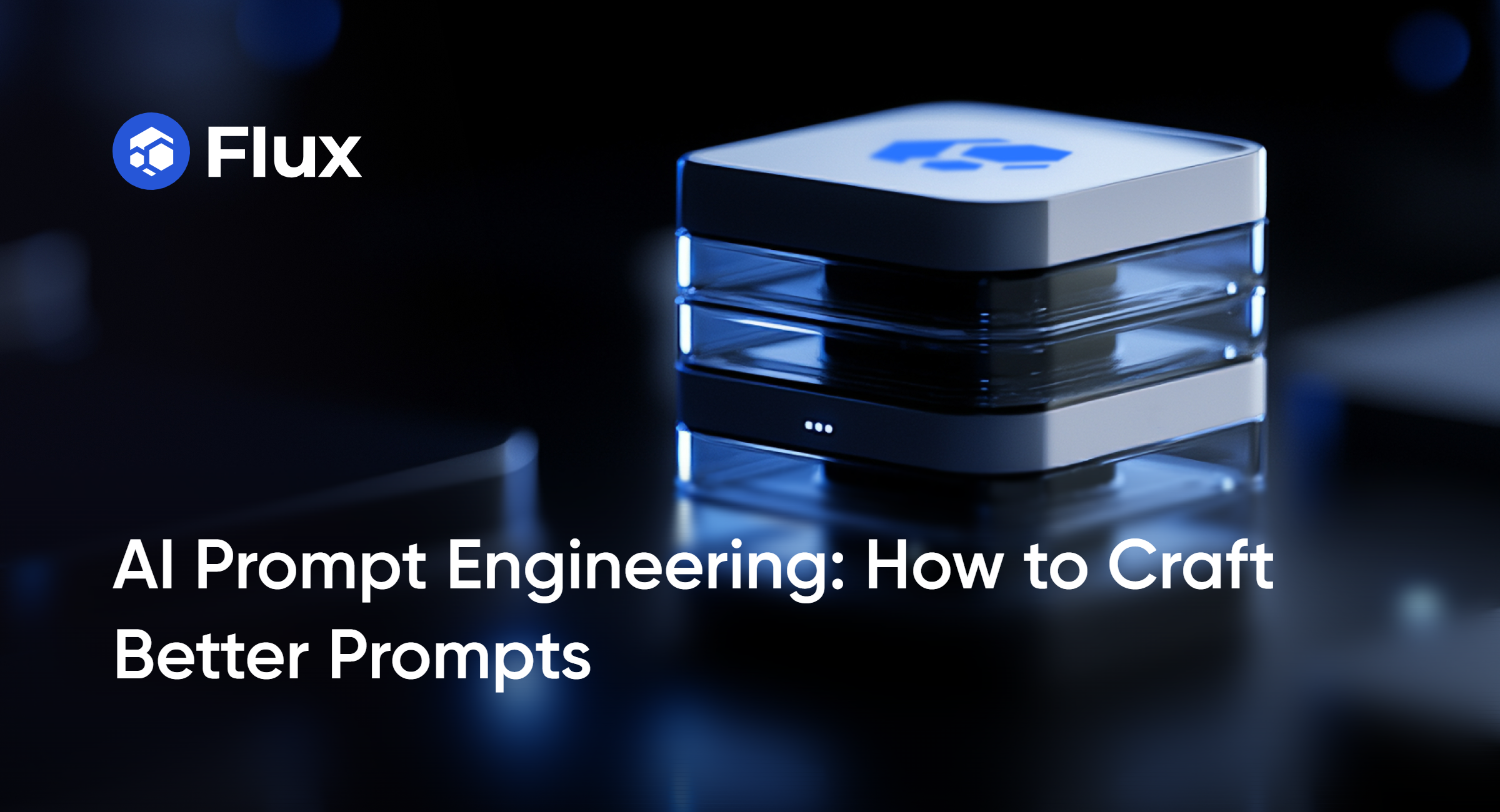When leveraging AI chatbots for research, content creation, or just plain conversation, the quality of your prompt determines the accuracy and depth of the model’s response. If you’re finding that FluxGPT isn’t yielding the answers you want, then it might be time to reassess the prompts you’re feeding it.
In today’s blog, we will explore prompt engineering and present Fluxers with the CRIT methodology. This conversational framework, when applied to LLM chatbots, guarantees context-awareness, accuracy, and very high-quality responses. So, let’s get into it!
CRIT Explained
When interacting with AI, it is easy to become lazy in thought patterns, where the model takes the lead in the interaction. However, it is essential when engaging with AI that the human remains the thought leader, driving the creativity of the model’s output.
The CRIT methodology—first developed by AI innovation leader Geoff Woods, which stands for Context, Role, Interview, Task—is a prompt framework that ensures humans remain the thought leaders during interactions with AI.
The purpose of CRIT is to provide chatbot models with as much clarity about a task as possible for the user’s initial prompt. It focuses on refinement through detail, facilitating an interaction where the model’s output is highly tailored to a user’s unique inputs.
Context
Typed as [CONTEXT:], this is the first part of the prompt where the user provides details to the model about a general task they want to accomplish. Details can include facts or statistics about a topic, and any thoughts about the task itself. Supporting documents, such as project outlines, can also be uploaded at this point to enhance context.
For example, if you’re trying to create an outreach campaign for home renovation services, the context you would provide could include details about the target audience, the regions where renovations are being done, and the types of renovation services offered.
The level of context you should provide depends on the model you’re using; chatbots with deep reasoning capabilities—like X’s Grok 4, Google’s Gemini 2.5, or Anthropic’s Claude-Opus 4 model—can process a greater depth of context.
Role
The second part of the prompt, typed as [ROLE:], is where you assign a specific role to the chatbot you’re conversing with. The aim is for the model to execute tasks from the perspective of its assigned role.
For example, in drafting your home renovation outreach campaign, the role you could assign to the model is a world-class outreach coordinator with deep expertise in email marketing and prior experience as a contractor—the more creative your role, the more unique the model’s response.
By assigning a complex role to the model and outlining details like tone of voice and experience level, you can give the AI a focused perspective through which to execute its task.
Interview
The third part of the CRIT prompt, typed as [INTERVIEW:], is very straightforward. You ask the model to interview you from the perspective of its assigned role to gain additional context.
The more questions the model asks during the interview, the more context it will gain. However, models will interview users indefinitely, so ensure that you specify the number of questions the model should ask you; we suggest between 3 and 5 for the best results.
Additionally, by having the model conduct an interview, the user guarantees their position as the thought leader, driving the interaction.
Task
The final part of the prompt, typed as [TASK:], is where you explain to the chatbot what you want it to do specifically. Outline a task you want it to execute once the interview is completed. For example, “your task is to draft an outreach campaign for home renovations designed for high conversion.”
Prompt Layout
The following is an example of the CRIT methodology applied. When you construct your initial prompt, this is how it would be typed out to the chatbot:
CONTEXT: I need to create an outreach campaign for home renovation services that targets homeowners aged 55 and older in Charlotte, NC. The services include carpentry and electrical, with a 15% down payment; prices are dependent on home size.
ROLE: Your role is as a world-class outreach coordinator with deep expertise in email marketing and prior experience as a contractor in the Charlotte area.
INTERVIEW: Interview me in your role, ask me four questions one at a time to gain additional context.
TASK: Your task is to create a 5-touchpoint email campaign that yields a 90% open rate with a 30% conversion rate. The language should be direct and convincing, reflecting a 50% Bill Burr and 50% JFK tone of voice with a strong emphasis on calls to action and next steps.
Conclusion
Apply the CRIT methodology when using FluxAI and watch your interactions transform from regurgitated, messy responses to context-aware and accurate outputs that enhance your workflows.
Implementing CRIT through a natural conversation with FluxGPT ensures that you remain the thought leader, driving the interaction and channeling your creativity based on the questions the model asks during the interview process.
Mastering this prompt framework will enable users to engineer inputs that yield actionable deliverables. Ready to get started? Put CRIT to the test in your next FluxGPT session and experience the difference thoughtful prompting can make firsthand. Be sure to follow us on X for more AI tips and tricks.
